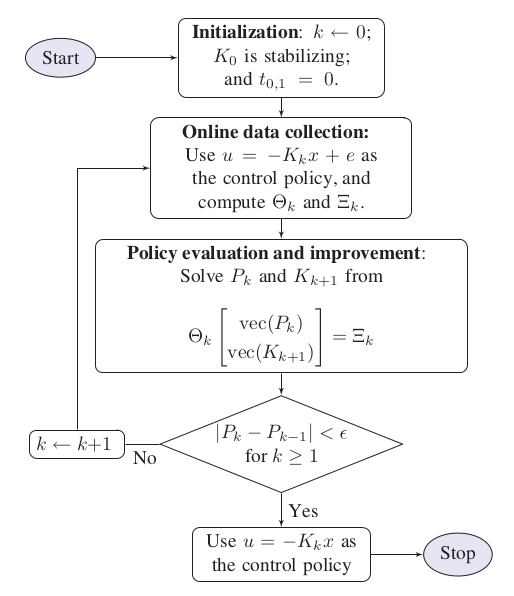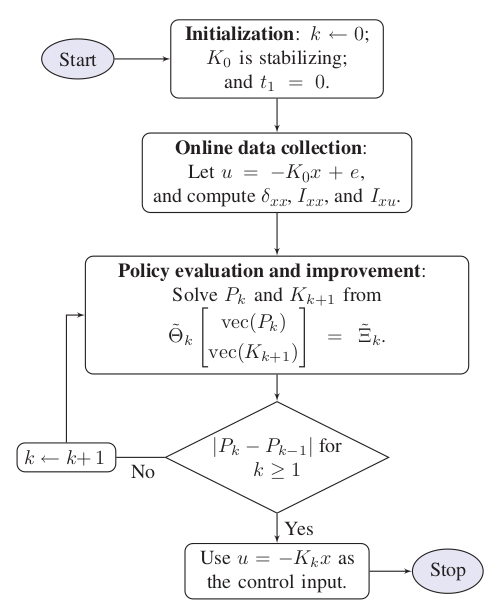Linear ADP Controller¶
The below algorithms is given in the book Robust Adaptive Dynamic Programming.
Problem statements¶
Given the linear system equation (1), design a linear quadratic regulator (LQR) in the form of that minimizes the following cost function
where .
The solution of this problem is which is also the solution of the Riccati equation, can be obtained by
OpenControl.ADP_control.LTIController.LQR(). However, this approach requires the knowledge of the system dynamic (the matrix A and B). The model-free approach below will resolve this problem.
Lets begin with another control policy where the time-varying signal e denotes an artificial noise, known as the
exploration noise. Taking time derivative of the cost function and integrate it within interval to obtain:
(1)¶
On-policy learning¶
For computational simplicity, we rewrite (1) in the following matrix form:
(2)¶
where
Note
To adopt the persistent excitation condition, one must choose a sufficiently large
number of datato satisfy the following condition:
In practical,
The time interval for each learning section is
, so properly set
OpenControl.ADP_control.LTIController.num_dataandOpenControl.ADP_control.LTIController.data_evalto make sure the learning section not too slow
Algorithm¶

Library Usage¶
Setup a simulation section with OpenControl.ADP_control.LTIController and OpenControl.ADP_control.LTIController.setPolicyParam() then perform simulation by OpenControl.ADP_control.LTIController.onPolicy()
from OpenControl.ADP_control import LTIController
Ctrl = LTIController(sys)
# set parameters for policy
Q = np.eye(3); R = np.array([[1]]); K0 = np.zeros((1,3))
explore_noise=lambda t: 2*np.sin(10*t)
data_eval = 0.1; num_data = 10
Ctrl.setPolicyParam(K0=K0, Q=Q, R=R, data_eval=data_eval, num_data=num_data, explore_noise=explore_noise)
# take simulation and get the results
K, P = Ctrl.onPolicy()
Off-policy learning¶
Let define some new matrices
and defined by:
then for any given stabilizing gain matrix , (1) implies the same matrix form as (2)
Algorithm¶

Library Usage¶
Setup a simulation section the same as the section then perform simulation by OpenControl.ADP_control.LTIController.offPolicy()
K, P = Ctrl.offPolicy()